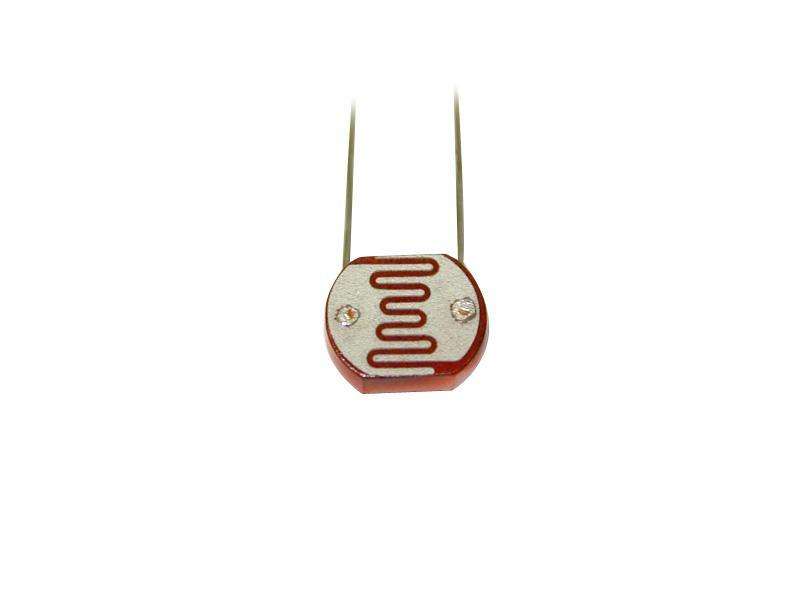1. What is a photoresistor
The photoresistor is a kind of light-sensitive component, and its resistance value can change with the change of external light intensity. Photoresistors are represented by the letters “R” or “RL” and “RG” in the circuit.

2. Types of photoresistor
Photoresistors can be classified according to the material and spectral characteristics of the photoresistor.
(1). Classified by the material of photoresistor
The photoresistor can be divided into polycrystalline photoresistor and single-crystal photoresistor according to its material and can be divided into cadmium sulfide (CdS) photoresistor, cadmium selenide (CdSe) photoresistor, lead sulfide (PbS) photoresistor, lead selenide (PbSe) photoresistor, indium antimonide (InSb) photoresistor, etc.
(2). Classification by spectral characteristics
Photoresistors can be divided into visible light photoresistors, ultraviolet light photoresistors, and infrared light photoresistors according to their spectral characteristics.
Visible light photoresistors are mainly used in various electronic products such as photoelectric automatic control systems, electronic cameras, and light alarms.
UV light photoresistors are mainly used for UV detection instruments.
Infrared light photoresistors are mainly used in automatic control systems related to astronomy, military, and other fields.
3. Does the photoresistor have positive and negative electrodes?
Photoresistors are not divided into positive and negative poles. The photoresistor works with the intensity of light. The resistance value decreases when there is light, and the resistance value is large when there is no light. A photoresistor is a type of resistor made by using the photoconductive effect of a semiconductor. The resistance value changes with the intensity of the incident light. It is also called a photoconductive detector. When the intensity of the incident light is reduced, the resistance is reduced. There is another kind of incident light that is weak, the resistance is reduced, the incident light intensity is strong, and the resistance is increased.
4. How does the resistance of the photoresistor change?
The resistance of the photoresistor changes with the light intensity. The stronger the light, the smaller the resistance value.
A photoresistor or light-dependent resistor (the latter is abbreviated as LDR) or photoconductor. Commonly used materials are cadmium sulfide, and also selenium, aluminium sulfide, lead sulfide, and bismuth sulfide. These production materials have the characteristic that the resistance value decreases rapidly under the irradiation of light of a specific wavelength.
This is because the carriers generated by the light all participate in the conduction and make a drift movement under the action of an external electric field. The electrons run to the positive electrode of the power supply, and the holes run to the negative electrode of the power supply so that the resistance of the photoresistor decreases rapidly.
5. How do photoresistors work?
The photoresistor is based on the internal photoelectric effect. Photosensitive resistors are formed by mounting electrode leads at both ends of the semiconductor photosensitive material and encapsulating them in a tube case with a transparent window. To increase the sensitivity, the two electrodes are often made into a comb shape. The materials used to make photoresistors are mainly semiconductors such as metal sulfides, selenides, and tellurides. Usually, coating, spray coating, sintering, and other methods are used to make a thin photoresistor and comb-shaped ohmic electrode on an insulating substrate. The leads are connected and sealed in a sealed housing with a light-transmitting mirror to prevent moisture from affecting its sensitivity.
When the incident light disappears, the electron-hole pairs generated by the photon excitation will recombine, and the resistance of the photoresistor will return to the original value. A voltage is applied to the metal electrodes at both ends of the photoresistor, and a current passes through it. When the light is irradiated with a certain wavelength, the current will increase with the increase of the light intensity, thereby achieving photoelectric conversion. The photoresistor has no polarity and is purely a resistive device. It can be used with both DC voltage and AC voltage. The conductivity of a semiconductor depends on the number of carriers in the semiconductor’s conduction band.
Here is another related article that gives us an introduction of photoresistor.


































